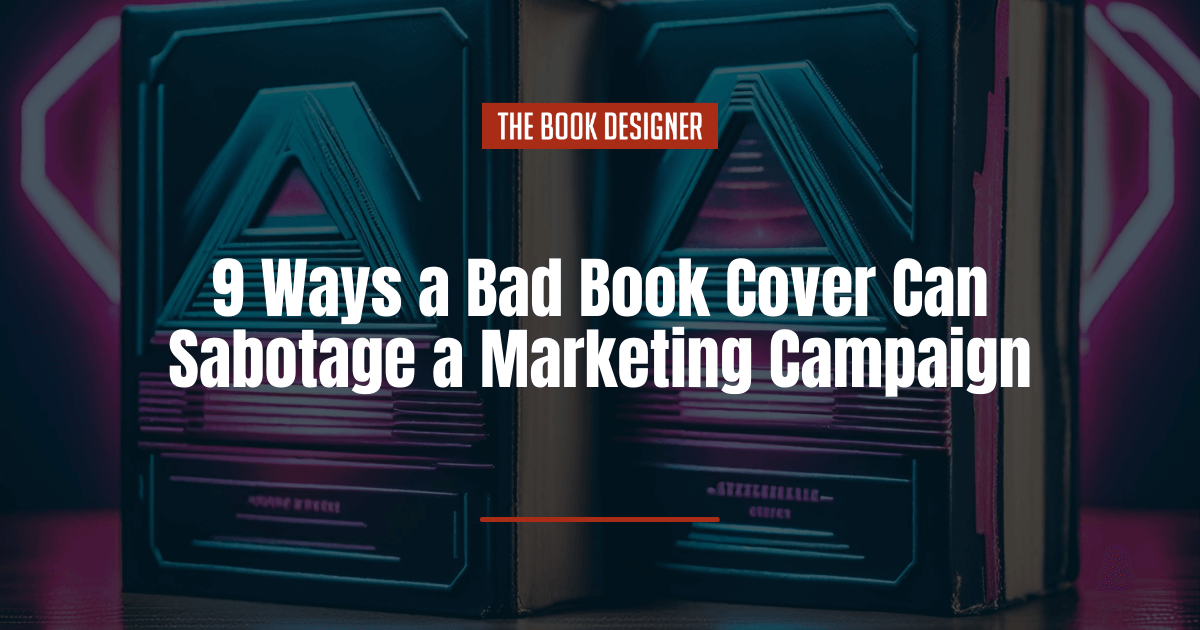When authors consult with me on any topic related to book marketing and publicity, I ask them a question they usually don’t expect.
“May I see the book cover?”
“I don’t need your help with the cover,” the author says. “I want help identifying the types of stories I can pitch to the media.”
Why do I ask to see your book cover?
Because before you try to woo the media with a sizzling pitch, or attract potential readers with compelling free content, you must be ready to dazzle them with an eye-popping cover. And the truth is, seeing a bad book cover is all too common.
One that screams “HOMEMADE!” can derail even the most clever and expensive publicity campaign. If you’ve already published your book, especially if it’s print on demand, consider spending several hundred dollars to have the cover redesigned by a professional.
If you’re lucky enough to afford a publicist, don’t spend anything unless your cover is not only good, but excellent. Otherwise, you could be throwing away money.
Here’s how a bad book cover can impede your author success:
How a Bad Book Cover Sabotages Your Efforts
Here are nine ways a bad book cover can sabotage your best efforts, and those of your publicist.
1. Magazine Editors Will Be Tempted to Say No
One of the easiest ways to convince a magazine to feature your book is to submit it for the “New Product” section. You don’t need a clever pitch, just a press release and a high-resolution image of the book cover.
Editors are often begging for images to accompany short items in this section. But the classier the magazine, the greater importance they place on an eye-catching cover that will draw readers’ attention.
A horrific cover can’t save even the most well-written press release. If you have a terrific story to tell about you and your book, the magazine will want to include the cover image, but not if the cover looks like it was designed by a fourth-grader.
2. Libraries Won’t Want to Carry It
Book distribution expert Amy Collins, whose guest posts appear here, says that acquisition managers pay attention to covers. With limited budgets, they want books that not only are well-written, but have covers that communicate to the reader what the book is about or, at the very least, the genre.
Because libraries display most books with “spine out” to maximize limited shelf space, your book’s spine must also be designed correctly. Amateur cover designers sometimes place the title of the book incorrectly on the spine: when the book is standing upright on a shelf, the letters on the spine are placed vertically and can be read from top to bottom. The title should be placed horizontally so that when the book is lying on a table, the title on the spine reads from left to right.
3. Bookstores Won’t Want to Carry It Either
Cover mistakes that turn off librarians also repel bookstore owners. And if they won’t carry your book, don’t expect them to host you for a book signing.
Bookstores often decide whether to buy a book after glancing at the cover for just a few seconds. A shopper will spend an average of only 8 seconds looking at the front cover. Would you buy one of these?

4. TV Stations Won’t Show the Book Cover on the Screen
You don’t necessarily need a book with kick-ass cover to convince a TV news program to interview you. But even if they give you a five-minute segment, they’ll be less inclined to show your unattractive cover on the screen. What a missed opportunity that would be!
5. Book Reviewers Will Be Inclined to Say “No Thanks”
Whether it’s a Hall of Fame reviewer on Amazon or a local book reviewer at your weekly newspaper, the writer is probably inundated with a mountain of pitches from authors looking for book reviews.
Guess which books they choose? Books that look interesting. Even if they take a chance on a book with a less-than-perfect cover, do you really want to see them mention your bad book cover design in an otherwise favorable review?
6. Sites Like LousyBookCovers.com Might Mock the Cover
When someone searches online for your book, the cover might be shown in the images near the top of he organic search results. If someone clicks on the image of your cover and it takes them to LousyBookCovers.com, do you think your book stands a chance?
Some websites and blogs even publish lists of bad book covers. Here’s one from Buzzfeed, complete with giant photos, of 25 Hilariously Bad Book Covers.
Here are Worst Book Covers on Amazon.
Most of these are extreme examples. But attend any author event or book convention, and you’ll see at least several covers that are bad enough that they could have been included on these lists.

7. Big Box Stores Won’t Take You Seriously
One of my clients wanted tips on how to approach corporate book buyers for his book that would be perfect to sell to customers at the big box home improvement stores.
I told him that before he does anything, spend a few hundred dollars for a redesigned cover. The photo wasn’t too bad, but he used Comic Sans, an awful font for a book cover. Many of these big chains are use to dealing with publishing companies that will usually invest in beautifully designed covers.
Beyond the big chains, many local bookstores may also not want to carry your book if the cover looks unprofessional. After all, they know readers are discerning and that a bad book cover won’t help them sell books.
8. You Risk Embarrassment at Author Conferences
I speak at author events, and I’ve seen many programs where brave authors submit their books to be critiqued by a panel of experts. I give them a lot of credit for asking for feedback. But the time to do that is before the book is published, not after.
I’ve seen some authors slink away, after hearing the panelists’ biting comments about the ugly cover.
9. Event Planners Won’t Buy Your Books in Bulk for Their Audiences
Public speaking continues to be one of the best ways to sell books. Some speakers will offer to speak for free if the event planner buys a book for everyone in the audience. Professional speakers will tack the bulk sale onto their speaking fee.
No event planner wants to be embarrassed by handing out a book with an ugly, boring, or dreadful cover.
How to Learn About Cover Design
If you want an easy way to learn about what makes an attractive cover, follow the e-Book Cover Design Awards, some of the most popular blog posts presented here each month. The entertaining feature chooses winners in fiction and nonfiction categories, and the judges often comment about what elements worked – or not. These four covers are among the best.



